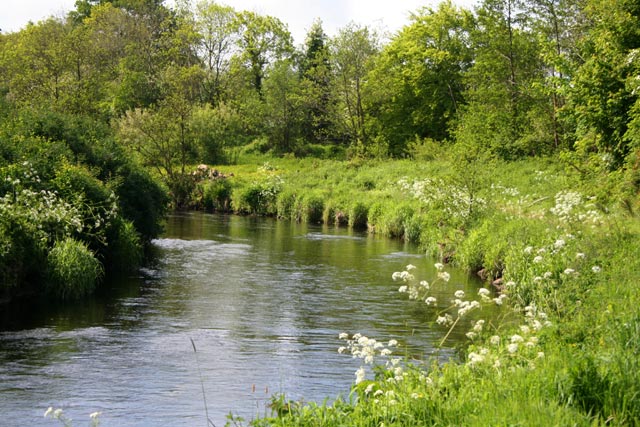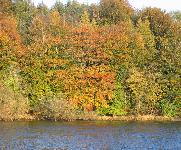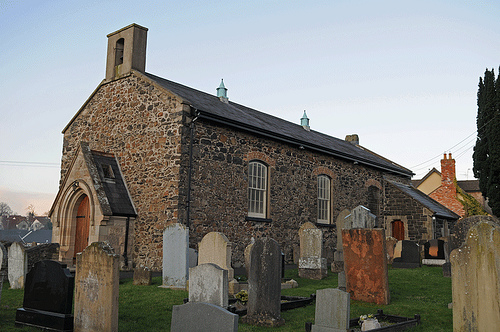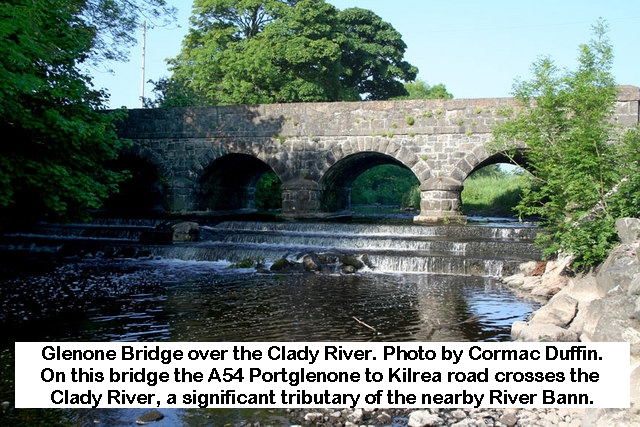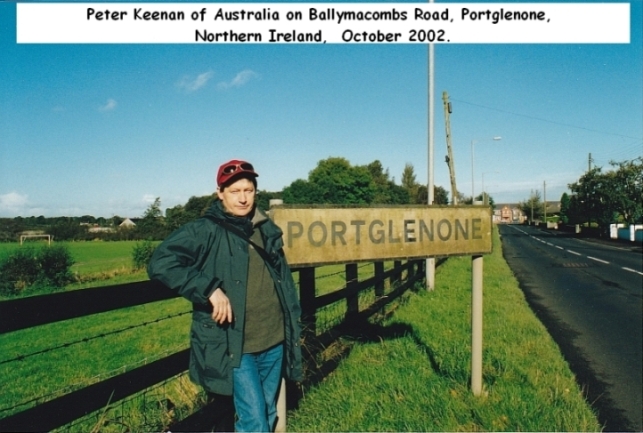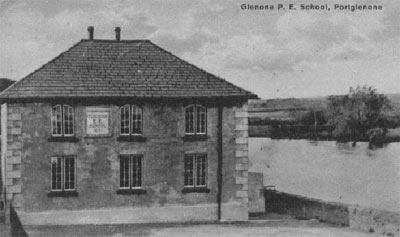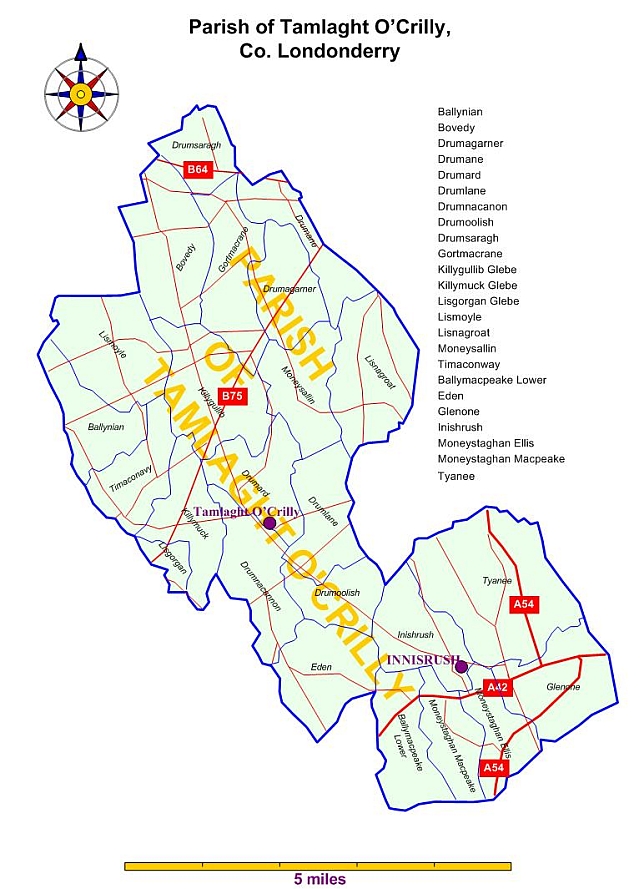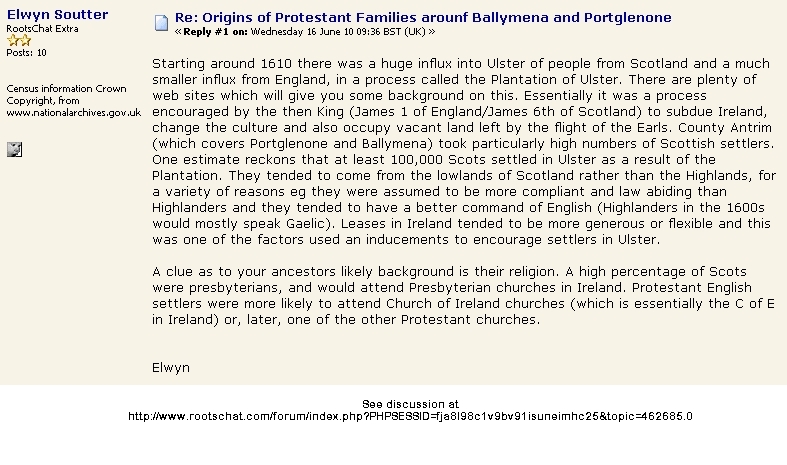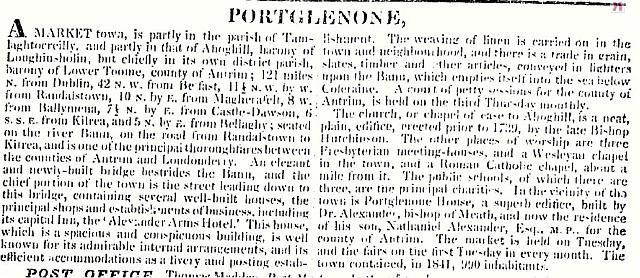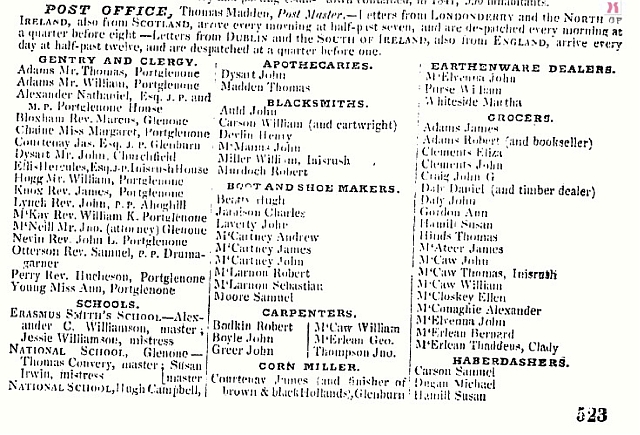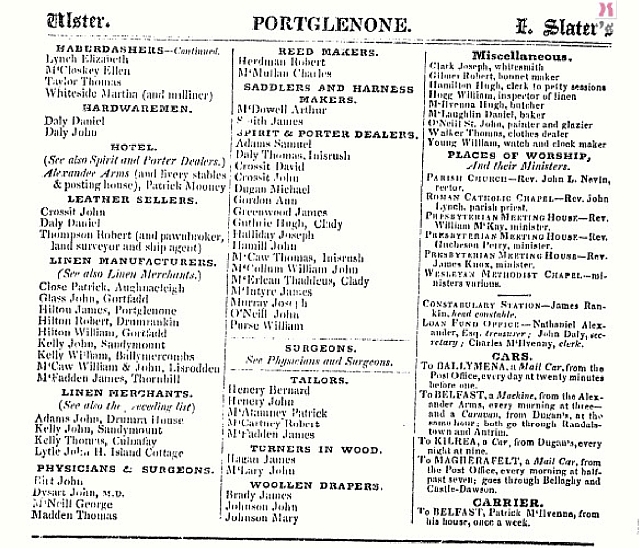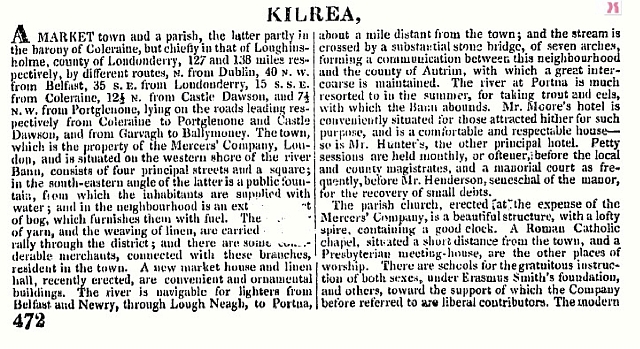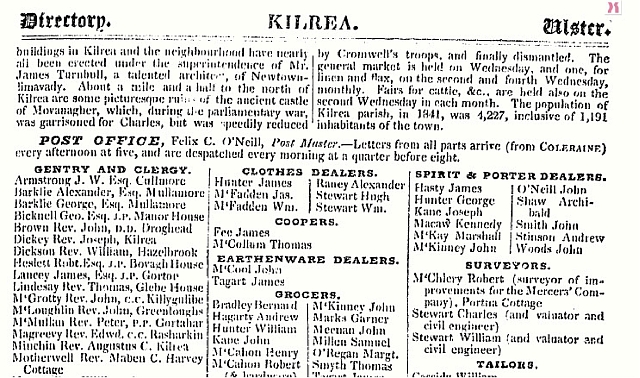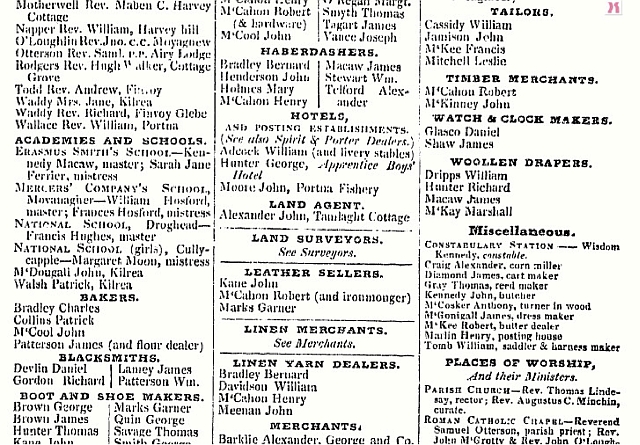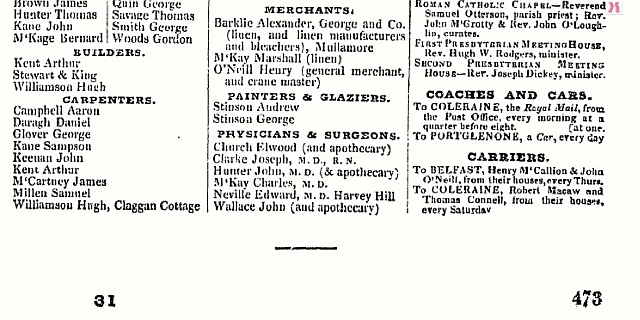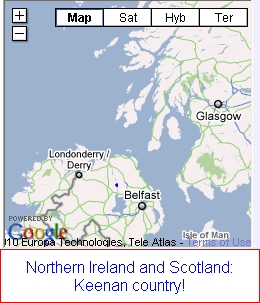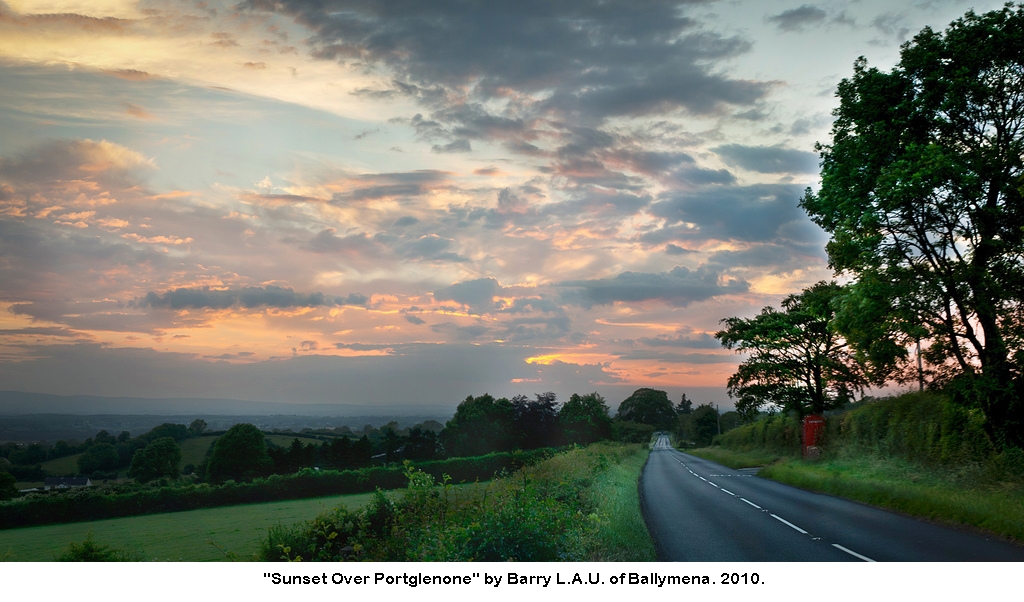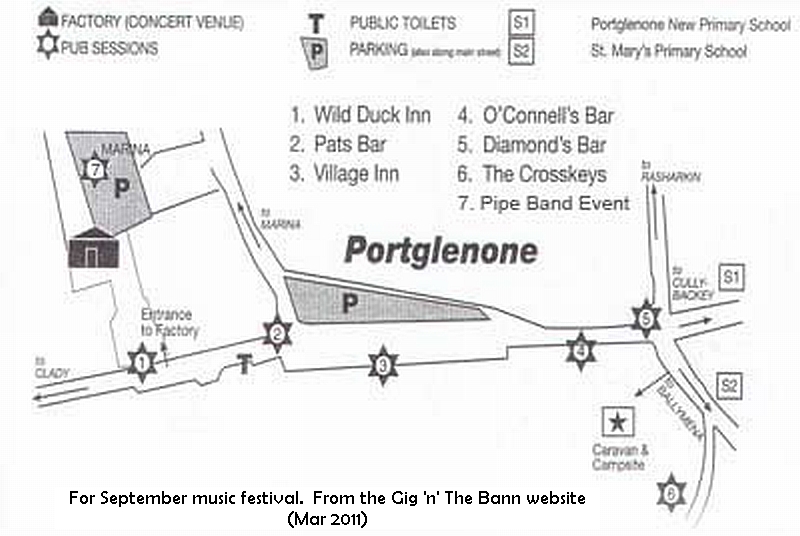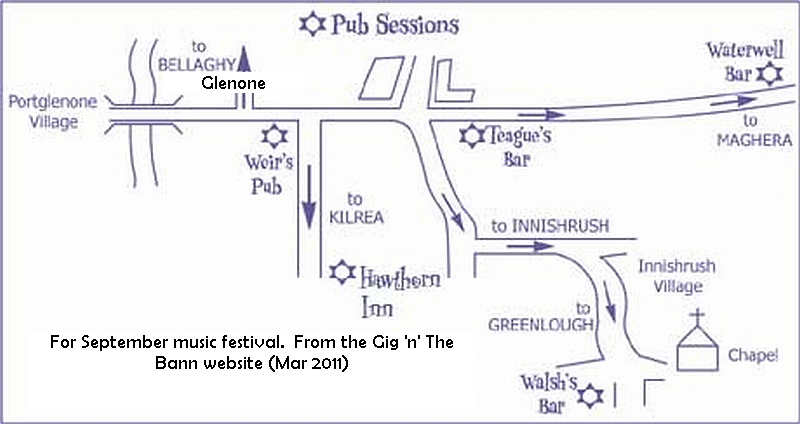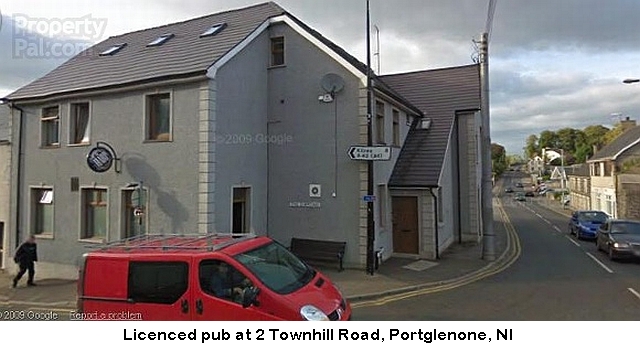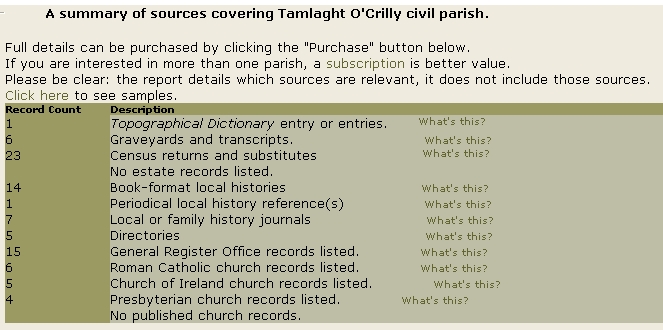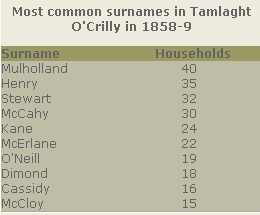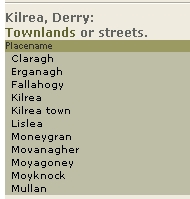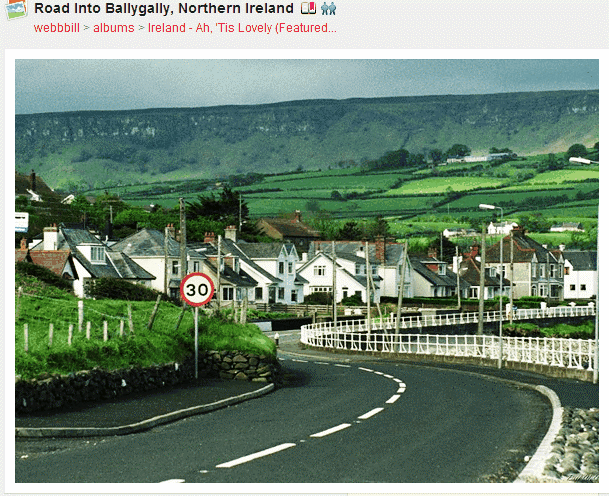The photo above and the text below are from the website of the Parish of Greenlough, Tamlaght O'Crilly. For more go to www.greenlough.com
The following description is from http://www.portglenonetourism.com/dir/tourism/heritage-trail/11.-glenone-national-school
Glenone National School. A very grand school for its time, Bannside, was by no means the typical National School.
Glenone National, (later Public Elementary), School was built in 1836, near Portglenone Bridge, on a site donated by Daniel Daly, a local merchant. A two-storey building, 31ft. by 20 ft., with walls 1ft.10 in. thick, it had a slate umbrella roof and was built of black quarry stone. It had one door, 10 windows and an 8-dayclock on the wall facing the bridge. There were two outdoor toilets and a small shed. Boys were taught in the lower storey and girls in the upper.
The total cost of the erection of the building was £155.75 and of this, the National Board contributed £103.85. The following are named as having given donations;- Rev John Rogers, PP of Tamlght £2; eight local merchants, W.H.Holmes, Daniel Day, John Daly, Sen., John Daly, Jr., Dr Heaney, Pat Mooney, John Hamil and James McEntire, all gave £1 each. The remainder, £36.90, was contributed by, "benevolent persons of all denomination, in sums equal to the circumstance".
Reproduced from "Making sense of it all" By Damien Clarke
The school, then known as Glenone Primary, closed in 1962. The teachers at this time were Mrs Maura Clarke (Principal) and Mrs Margaret Fox. Glenone School was demolished in 1986.
REGARDING HISTORY OF INNISRUSH
Extract from a "Quiet Places of the Lower Bann Valley" by John HUGHES and Donal BARTON. (circa 1998)
“In Co Derry across from Portglenone is Innisrush, named after an island that used to be in the middle of Green Lough (green lake). There was the residence of Hercules ELLIS, local landowners. It was once quite a thriving village. John CLEMENTS owned a woodworking business. The Green Lough which gave its name to the parish (Greenlough) has now disappeared, having been drained in the process of draining bogs in the late 1800's. However once there was an island in the middle of it and Brian CARRAGH built a castle on it and lived there till he died in 1586. He was the great grandson of Dumnhall Donn, Donnell the Brown, O'NEILL, who founded the sept clan Domhnaill-Duin-Na-Bana. He lived on the Antrim side but seized the O'Cahan clan's lands, which this was. Many tried to capture him but at this time the land was bog, water, and wood.”
Extract produced in an email by Linda Merle n 1998 to Ancestry.com. http://archiver.rootsweb.ancestry.com/th/read/Scotch-Irish/1998-10/0909120970
The book mentioned above - "Quiet Places of the Lower Bann Valley" - mentions other sites and persons of historical importance, such as Clady, the Clady River and John Keenan, and has a number of photos of the Lower Bann area. A copy of the book, without the hyperlinks, is also published on this site. To see my PDF copy CLICK HERE. For my Word copy CLICK HERE.
Voices from Portglenone (County Antrim)
Recorded 19/1/2005 by the BBC (Ulster). Conversations in Portglenone about accent, dialect and attitudes to language. Interviewer Conor Garrett. Interviewees: Vincent McAllister (b.1980), Michael McAllister (b.1945), Claire McCorry (b.1982) and Pearce (b.1989). Duration of recording: 1hr 3mins 4secs.
LINK to sound recording: http://sounds.bl.uk/Accents-and-dialects/BBC-Voices/021M-C1190X0044XX-1301V0#_
Parish of Greenlough History:
Schools
"Although Greenlough parish has only two primary schools at present, in the past it could boast of several. No less than 20 schools are listed by the Commissioners of National Education, Dublin, for the parish of Tamlaght O’Crilly in their Report for the year 1823. The schools listed with their principals were:
Drumoracannon (Drumnacanon) (William Spoole– Protestant)
Hervey Hill (Patrick Quinn– Catholic)
Drumlain (Dominic Heyland & Mrs Heyland– Protestant)
Drumnacanon Catholic School (Daniel O’Connor)
Lisnagrotte (James McLaughlin– Catholic)
Tyanee (John Rea– Catholic)
Innisrush (William Thompson– Protestant)
Kildare Place School at Glenone (James McLester)
Bovedy (James McArthur– Presbn.)
Drumolish (Drumoolish) (James Workman– Protestant)
Drumagarner (James O’Neill)
Lismoyle (Joseph Pollock)
Ballynion (Robert Doriss)
Drumcan (Mary McCotter)
Glenone (John Henry, Catholic) stone and mud
Glenone (James McLester, Protestant) stone & lime, an excellent house
Money Haghan (Mary Ferguson– Protestant)
Innisrush (Miss Ellis– Protestant)
Mayogeny (James Diamond– Catholic)
Leslea (Margaret Dunbar, Presbn.) a poor cabin
Both Catholics and Protestants attended these schools. In 1838 Fr John McLaughlin built the first Greenlough National School on a site opposite the old Parochial House. At the same time a National School was built alongside the River Bann in the Townland of Glenone. This was known as Glenone National School. The old Greenlough National School proved inadequate for the numbers attending and the parish priest converted the old stables at the edge of the graveyard into classrooms. The teacher’s illustrations can still be seen etched on the walls of the old stables. These two schools were later amalgamated in the modern Greenlough Primary School built at Moneystaghan in 1962."
The map and text below are from the website of the Parish of Greenlough, Tamlaght O'Crilly. For more go to www.greenlough.com
.......................................
The Townlands in Greenlough
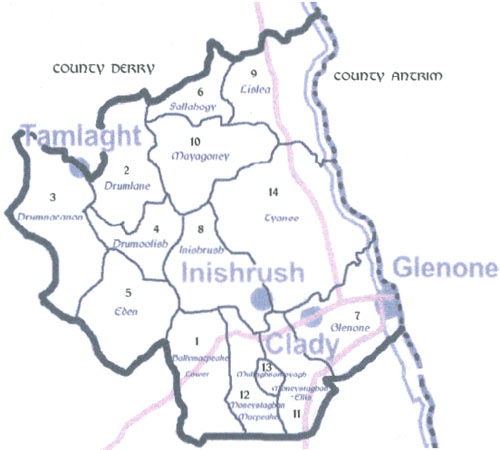
Click here for link to Tamlaght O'Crilly Upper Church of Ireland 1831 Census
(Added 23/1/2012)
Griffiths Valuation of Ireland 1848-1864
For an extract of the 63 Keenans in County Derry at the time, showing names, townland and parish, go to http://www.failteromhat.com/griffiths.php and do a search. The same type of search can be done for any County.
Henry Keenan of Ballybeg, Ahoghill, County Antrim, may also be an ancestor, as this area is close to Portglenone.
Here's some interesting reading material:

